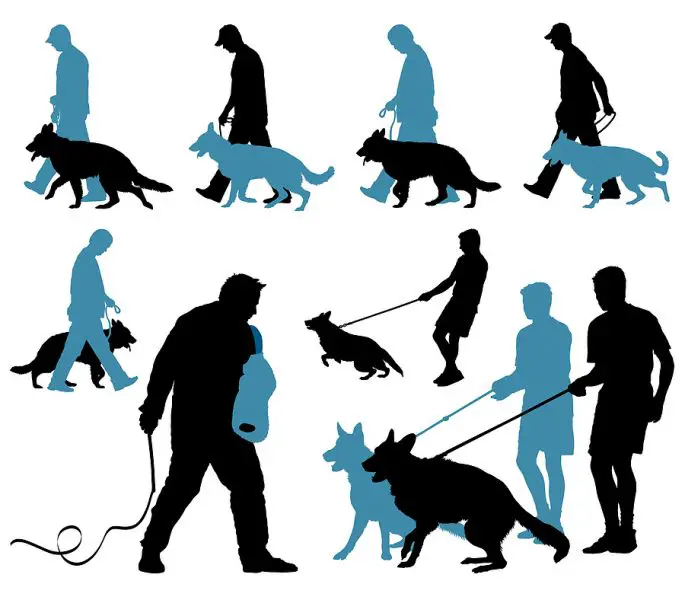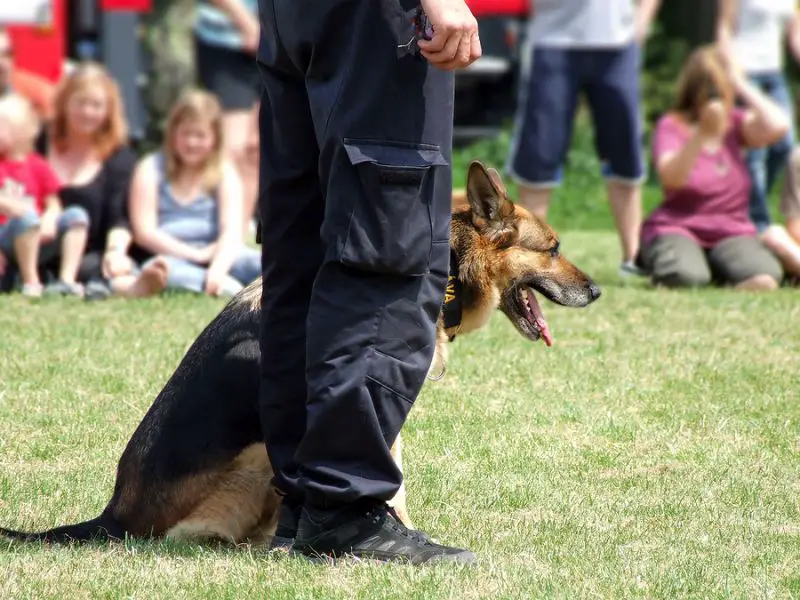
This is a placeholder text
Group text
 What is Schutzhund and IPO?
What is Schutzhund and IPO?
By Kim Downing
The origins of all training, such as Schutzhund or IPO, are based in Germany. These training tests were developed as a primary method of producing top level German Shepherd Dogs. They were geared to identify suitability of individual dogs for work in several formats:
- Stamina and endurance
- Agility
- Temperament and nerves (how well the dog handles stress)
- Courage
- Intelligence
- Handler Loyalty
- Desire to Work
The founder of our German Shepherd Dog breed, Max von Stephanitz, believed that these tests were necessary to continue to produce dogs of the highest level of working ability and to weed out those that couldn’t handle it from the gene pool.
Schutzhund and IPO
In today’s modern format, there is virtually no difference between Schutzhund and IPO. Both were developed for the same purpose. IPO is the International standard, and at one time had a different set of rules as determined by the governing body of FCI. Following rule changes in 2004, where the SV (via the VDH, all breed Kennel Club of Germany) began conforming to FCI rules for Schutzhund, the standards are virtually the same.German Shepherds seem to dominate many of the Schutzhund shows although a wider variety of breeds can participate and often do in IPO shows. Any breed can technically be trained in Schutzhund work, but as any trainer knows, not all individual dogs and not all dog breeds are suitable for this work. It truly is a test of a dog and requires a high level of ability in several areas.
What are the Components of Training and Trialing?
The public often has a misconception about what this type of training is. They often see photos of dogs doing bite work and see an aggressive and potentially dangerous animal. What they don’t know is how well controlled these dogs must be. As opposed to some police dogs and personal protection dogs that don’t require quite as much provocation, Schutzhund dogs are required to be tightly trained and as a general rule are quite safe in the public. Most people are actually astonished when they meet one! They also frequently don’t realize that training is comprised of three areas with protection work only being one of those areas.The elements of Schutzhund work are:
- Obedience: The obedience work is of a high level that is designed to test the dog’s intelligence, desire to work and please its handler, its ability to take directions from its handler, and its ability to work under stress (heeling around other people, during noises like gunshots, etc.) The obedience work includes heeling work, retrieval work (including over an A-frame obstacle), recalls, send outs, stay, along with position related work such as sit and down. It is important that the dog be a happy worker and interested in what he is doing.
- Tracking: The depth of difficulty differs based on the title being worked towards, but tracking is all about testing a dog’s ability to not only scent but also about his ability to stay focused enough to follow the scent without distraction or frustration. It is also a test of how confident a dog is and how well he works in front of his handler. Tracking is not something that a dog can ask you to hold his hand during! The dog will be required to properly identify articles (by alerting in some fashion such as lying down on or near the object) to his handler that have been left on the track by the track layer.
- Protection: This is the most misunderstood of the three phases of training and is normally the one the general public focuses on. During training and trialing, there must be a ‘helper’ to do protection work. A helper is the person that will be wearing the padded bite sleeve. This person will also be concealed behind a blind and at more than point during the test will either attempt to escape or pretend to threaten/attack the dog or handler. Initially the dog is required to locate the helper when he is hidden and hold him there for the handler. When the helper attempts to escape or threatens the dog or handler, the dog is to actively apprehend the helper by biting the bite sleeve. A dog must be confident enough and strong enough mentally to handle this work, but he must also be sensitive to handler commands and release the sleeve when requested. It is hard to call a dog off when he is working at a high, excited level (or in high drive mode) so it is imperative that he is trained well enough and is responsive to handler commands.
It is important to note that temperament is a very important aspect in all levels. There are multiple things that are integrated into the testing for evaluating temperament. If a dog cannot pass these elements (by showing fear, nervousness, extreme aggression, sound reactivity, weaker nerves, etc.) he will not be able to pass a test.
 What are the Levels of Titling?
What are the Levels of Titling?
There are multiple levels of titles that represent progressively harder levels of work. For each title, there are 300 points available (100 points in each of the three components of obedience, tracking, and protection work). In order to title, a dog must successfully acquire at least 70 points (70%) in tracking and obedience and at least 80 points (80%) in protection. Of course the goal is to score as highly as one can!Here is how titles breakdown:
SchH 1/VPG 1/ IPO 1: Beginning level of Schutzhund (obedience, tracking, and protection)
SchH 2/ VPG 2/ IPO 2: Intermediate level of Schutzhund (obedience, tracking, and protection)
SchH 3/ VPG 3/ IPO 3: Advanced level of Schutzhund (obedience, tracking, and protection)
A few additional titles that might be obtained:
FH: Advanced tracking work
BH: This is a first level for everything else. It is to test obedience and traffic sureness.
WH: This is a watchdog test for alertness.
AD: This is an endurance test to test a dog’s physical ability and stamina.
SchH A: This is only obedience and protection work.
Dogs should be 15 months old for BH testing, 16 months old for FH and AD testing, 18 months old for SchH A and SchH1, 19 months old for SchH2 and lastly, 20 months old for SchH3.
Contact information Disclaimer Privacy Statement Copyright Information Terms of Service Cookie policy ↑ Back to top




